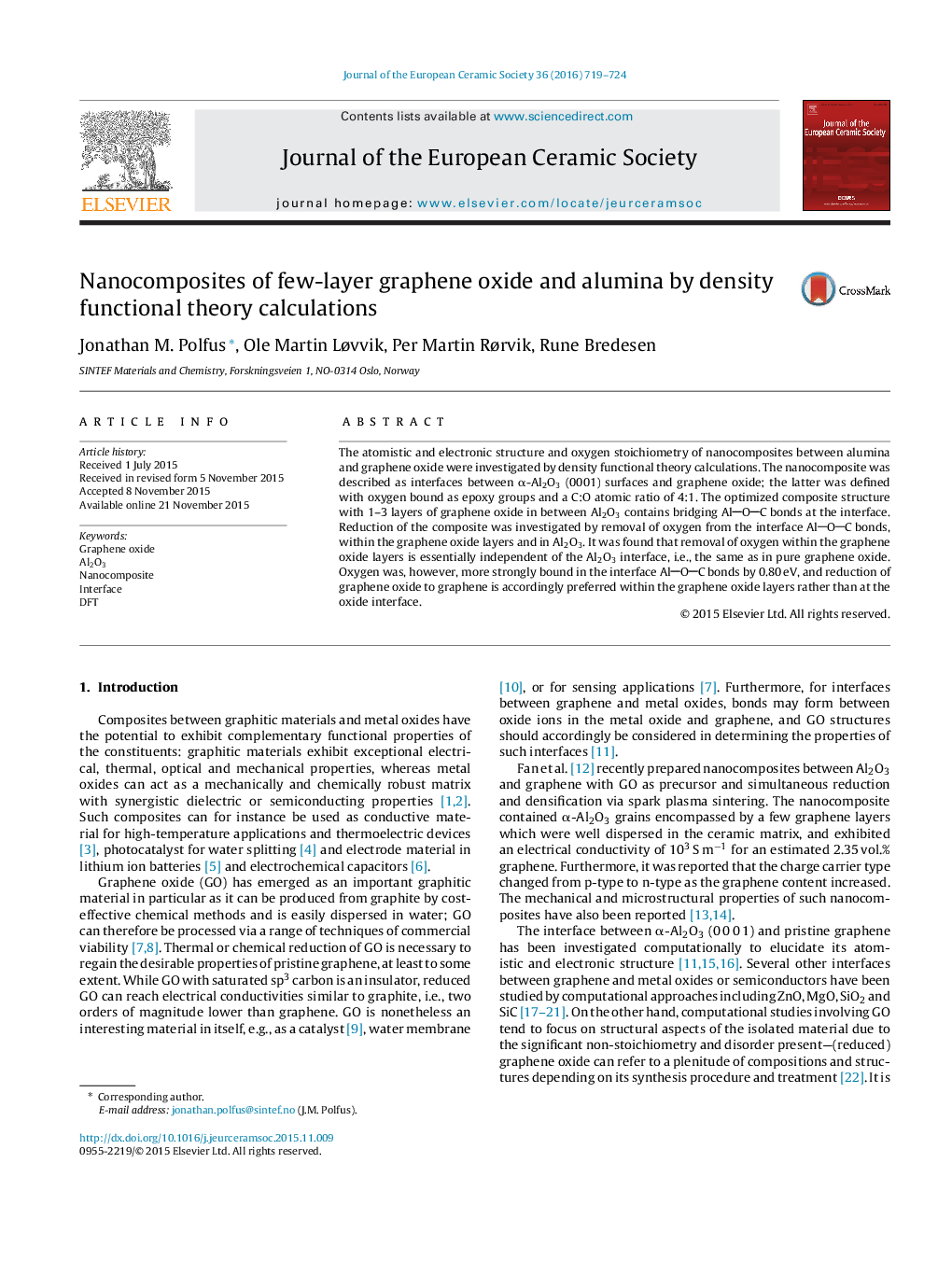| Article ID | Journal | Published Year | Pages | File Type |
|---|---|---|---|---|
| 10629427 | Journal of the European Ceramic Society | 2016 | 6 Pages |
Abstract
The atomistic and electronic structure and oxygen stoichiometry of nanocomposites between alumina and graphene oxide were investigated by density functional theory calculations. The nanocomposite was described as interfaces between α-Al2O3 (0001) surfaces and graphene oxide; the latter was defined with oxygen bound as epoxy groups and a C:O atomic ratio of 4:1. The optimized composite structure with 1-3 layers of graphene oxide in between Al2O3 contains bridging AlOC bonds at the interface. Reduction of the composite was investigated by removal of oxygen from the interface AlOC bonds, within the graphene oxide layers and in Al2O3. It was found that removal of oxygen within the graphene oxide layers is essentially independent of the Al2O3 interface, i.e., the same as in pure graphene oxide. Oxygen was, however, more strongly bound in the interface AlOC bonds by 0.80 eV, and reduction of graphene oxide to graphene is accordingly preferred within the graphene oxide layers rather than at the oxide interface.
Related Topics
Physical Sciences and Engineering
Materials Science
Ceramics and Composites
Authors
Jonathan M. Polfus, Ole Martin Løvvik, Per Martin Rørvik, Rune Bredesen,
